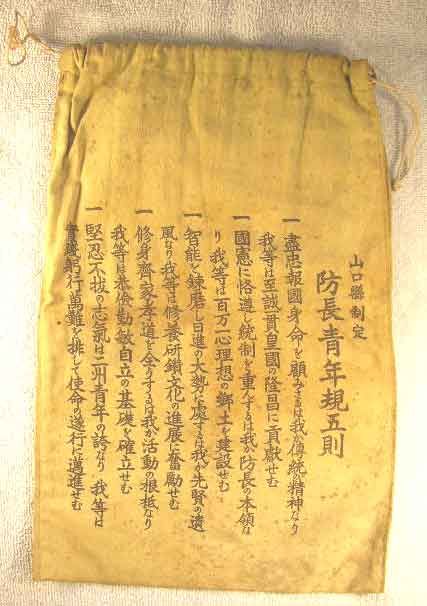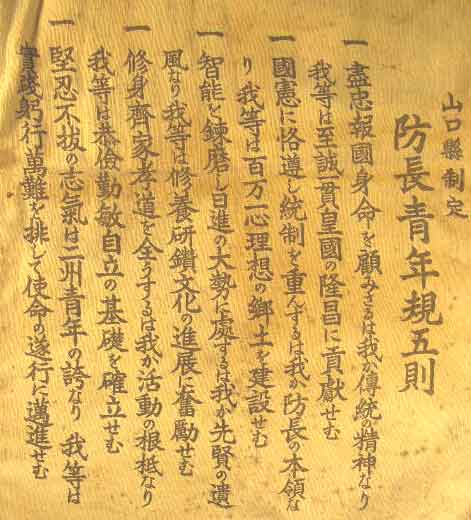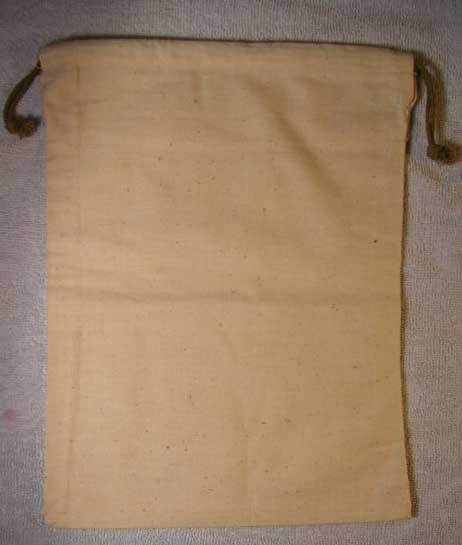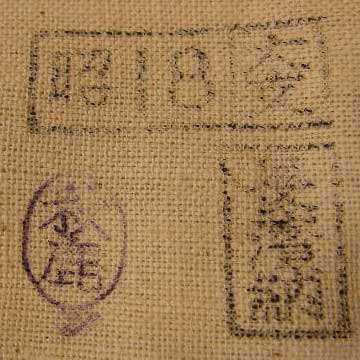Other
Cloth Bags
This one is labelled a kun-ren-bukuro (training bag). The large
character in the star is sei-nen,
short for “youth”. Down at the bottom is a box for the name of the boy and the
training centre (see close-up below).

Here is the back. Instead of listing
the contents, as on the bags above, this is a list of rules. The rules are
translated below with a close-up picture.

This close-up shows the name of the youth and
his training centre. The two rows each start at the left. The top one says: kun-ren-sho-mei (name of training
centre), then Yama-guchi-shi-dai-seki-sei-nen-kun-ren-sho
(Yamaguchi City Daiseki Youth Training Centre). The bottom row says shi-mei
(name), then Yama-moto Ko-suke. The
family name Yamamoto is easy, but the
given name Kosuke is just an educated guess based on the separate readings of
the two characters. The ko
part means filial piety, a core value of Confucianism.

Here’s the translation of the rules I promised
you. The column at the far right says: Yama-guchi-ken-sei-tei,
“enacted by Yamaguchi prefecture”. The second column from the right says: bo-cho-sei-nen-ki-go-soku. Based on the
context, it seems like the term bocho, meaning literally “defense leader”, was
applied to the recipients of this type of bag. Perhaps these were youths who
had been selected for leadership. However, Bocho is also a place name in the
yamaguchi prefecture area. Anyway, the whole thing means “five rules for youth
defense leaders” or
“five rules for Bocho youth” [continued below photo].

The rules themselves are:
- Being loyal and serving the
nation without regard for body or life and maintaining a strict spirit of
service, we will be consistently devoted to the prosperity of the empire.
- Strict observation of the
constitution and respect for authority being the duty of a defense leader,
we will establish the ideal of “one million hearts as one” in our
hometowns.
- Polishing my intellect and
conducting myself to create a pattern of daily progress according to the
tradition of the ancient sage [Confucius?], I make strenuous efforts to
develop a culture of self-disciplined study.
- [to come]
- [to come]
This next bag is a bit of a mystery. It is completely devoid of external
markings and is like new. I wonder whether it might have been left plain so the
user could apply his/her own markings?

Although neither the front nor the
back has any markings, these three stamps are inside the bag near the top. The
top one has the date Showa 18 (1943) on the left. I can make out a few of the
other characters but not enough of them to make sense of the meaning.

Click here to go back to the Japanese Military
Bags page: Teri's Japanese Handgun Website: Japanese Military Bags
Click here to go back to the Other
Militaria page: Teri's Japanese Handgun Website:
Other Japanese Militaria
Click here to go back to the main page: Teri’s Japanese Handgun Website
Last updated: October 16, 2004. All contents are copyright Teri unless otherwise specified and may not
be used elsewhere in any form without prior permission.